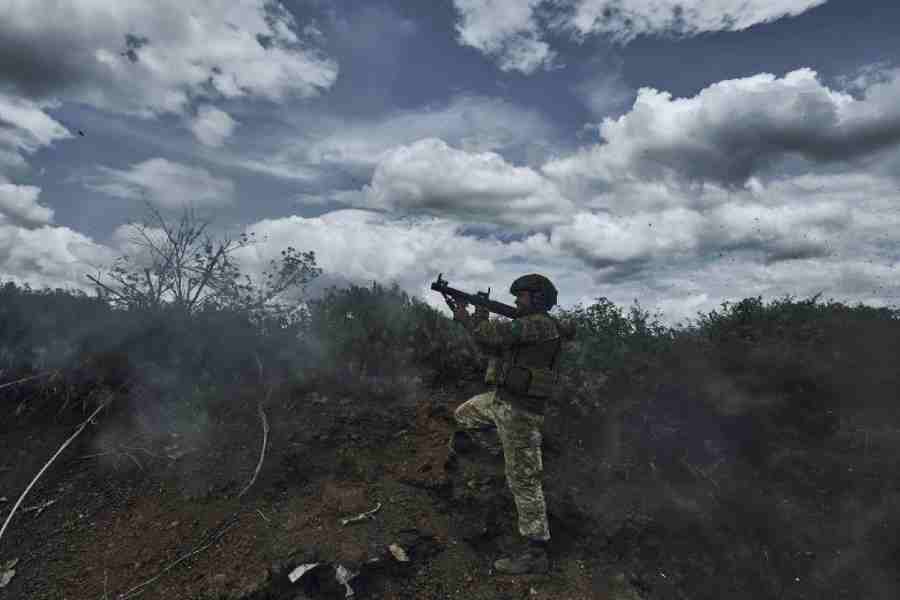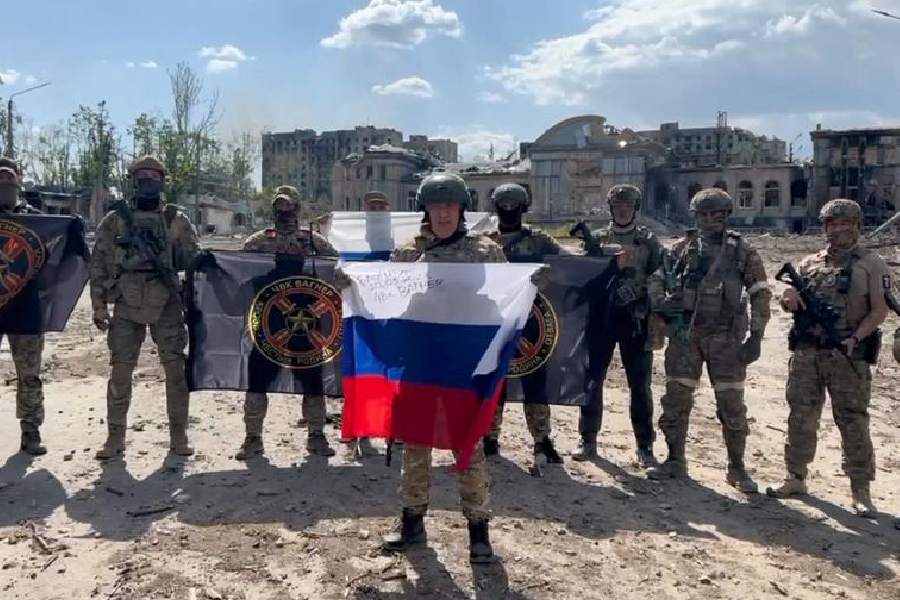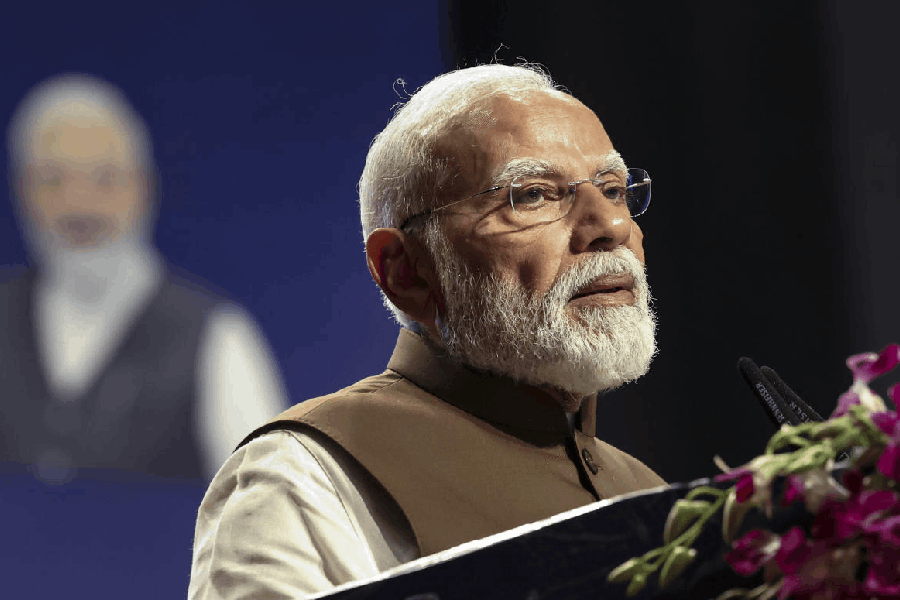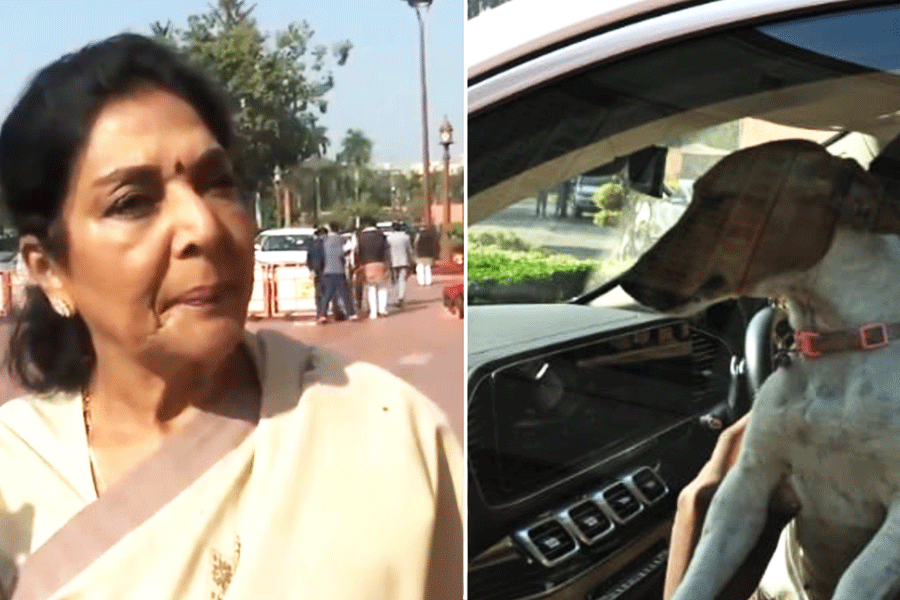Just weeks before President Volodymyr Zelensky of Ukraine visited the city of Bakhmut in December, a soldier with the military call sign “Bear” stared out of the window of a ruined sixth-floor apartment overlooking the city’s eastern reaches. I quietly stood next to him. The battle below played out in muted ferocity.
Rockets lit the sky. A tank burned in the distance. To the south, Russian incendiary munitions floated downwards, the thin arc of white flames igniting small fires on the ground but little else. There was nothing left to burn, the area already shelled to what seemed like oblivion.
“Bakhmut,” I wrote in my journal, “is in rough shape.”
That was one long night of hundreds, as Bakhmut became the focal point of some of the fiercest fighting of the war — the object of acute desire for Russia and of a tenacious defence by Ukraine. And now, the city of Bakhmut appears to have fallen to the Russians after 10 months, leaving thousands of soldiers wounded or killed, and a lingering question: How did a nondescript city the world had never heard of become the place where both sides decided to fight to the end, no matter the cost?
“Seems all the vultures are here,” one soldier messaged me as throngs of journalists showed up when the city seemed on the brink of falling in March. “Where were you before it got this dire?”
A war’s trajectory is unknowable. Combatants, political winds and military strategy have an equal say in the battles fought and the violence that follows. Bakhmut, a former Cossack outpost that was a salt-mining town at the war’s outset, happened to be where two armies collided. Pride, defiance and sheer stubbornness quickly gave the city outsized importance.
Falluja, in Iraq, was unknown to much of the world until the US tried to stamp out a growing insurgency in 2004. There were two separate battles for the city, one lasting three weeks, the second six. They were intense but much smaller in scale than Bakhmut’s destruction and loss.
Gettysburg was a rolling landscape of hills and fields typical of southern Pennsylvania, but it happened to be where three days of futile fighting dashed Robert E. Lee’s prospects of turning the Civil War in his favour. Iwo Jima was no more than a scab of an island in the Pacific, but the US needed it for long-range bombers, and the struggle to control it became one of World War II’s most gruelling battles.
But whether it be Bakhmut or Iwo Jima or Falluja, the end of the battle, no matter the stakes or victor, is always the same: unfathomable loss, and a reckoning with what comes next. How do you remember the dead, and prepare for what you fear will be the calculated indifference of your leaders, who are plotting their next campaigns, with battles that might lead to your own demise?
“‘The enemy,’” said Joseph Heller’s character Yossarian, in his World War II novel Catch-22, “is anybody who’s going to get you killed, no matter which side he’s on.”
By Monday morning, Ukrainian officials were talking about controlling the “outskirts” of Bakhmut and preparing operations on the flanks, a subtle indication that the battle within the city had come to an end. Amid the rubble, the pre-war population of about 70,000 has dwindled to a few thousand or less.
The Russian capture of Bakhmut at one point seemed unlikely. The Ukrainian army had pushed the Russians from around Kharkiv last September. In November, the port city of Kherson was liberated. Ukraine was winning. There was hope among some in Bakhmut that Kyiv’s troops would keep advancing, turning the tide once and for all. But despite their defeats elsewhere, Moscow’s troops along with the Wagner mercenary forces, the Kremlin-backed group that was leading the assault on Bakhmut, never stopped attacking the city.
President Vladimir V. Putin of Russia had made it clear his forces were going to capture Bakhmut, and then take aim at the entirety of the mineral-rich Donbas region in which it resides. There was no winter lull as the ground hardened and the metal breaches of howitzers and Kalashnikovs became painful to touch with fingers numbed from the cold. Spring just brought more destruction in fierce and bloody street-to-street fighting.
Military analysts, western officials and the media argued about the “strategic significance” of Bakhmut for months as if some military-style jargon might make it easier to stomach the loss of a city to an invading army.
I remember the pundits and the press in 2010 when I fought in a different battle as a Marine infantryman in southern Afghanistan — the battle for Marja. It was nowhere near as violent as what I witnessed in my many trips to Bakhmut as a journalist for The New York Times, but like the Ukrainian soldiers fighting for their city, I knew the world was watching.
How little that meant in 2010 when no amount of public scrutiny would determine if my friends lived or died. And how little it meant for the soldiers fighting in Bakhmut, where every minute not under shelling or attack was a welcome reprieve, and each day’s objective was to survive and keep one another alive.
Zelensky turned Bakhmut into the war’s official focal point when he visited in December, appearing alongside his war-weary soldiers in what looked like a vacant factory near the front. The speed bump of a city, formerly named Artemivsk, was in the spotlight.
Bakhmut, with its once neatly trimmed walking paths and a quaint and well-known winery, was suddenly strategically significant, whether the generals and analysts agreed or not.
Zelensky’s visit was all the media and the Ukrainian people needed. “Bakhmut Holds” became a rallying cry. The war had another set-piece battle, one that felt eerily similar to the siege of Mariupol and the fighting in Lysychansk and Sievierodonetsk months before it: outnumbered defenders, fighting off a much larger army.
We “are in full fire encirclement”, said one soldier fighting in Bakhmut towards the battle’s end.
Opposite Zelensky was Yevgeny V. Prigozhin, the head of Wagner. The once secretive tycoon started appearing in videos on the Bakhmut front. In the footage, Prigozhin is seen rallying his fighters and egging on Zelensky as he adjusts his body armour.
He also sparred with the Russian military leadership, castigating them and mocking them. It was a camera-ready match-up heightened by the grisly images also coming from the front.
Videos posted from the battlefield showed a shell-scarred landscape dotted with shattered trees. Soldiers fought from muddy trenches in knee-high water. Trench foot was rampant during the winter. Bakhmut was soon compared to Verdun in 1916 (a 10-month battle that had hundreds of thousands of French and German casualties).
But bloody trench warfare in eastern Ukraine was nothing new, having been a staple of the conflict since Russian-backed separatists began fighting the government there in 2014.
As I stood by the shattered window that frigid night in December, I remember thinking that despite the crescendo of artillery and the chatter of gunfire, the battle for Bakhmut felt far away. Two days later, a shell crashed into the empty apartment we had been standing in.
Now the Russians patrol the city. The war goes on.
It will inch towards new places on the map, not yet destroyed by months-long artillery battles, where new slogans might emerge, and where the “strategic significance” remains in question, as the world awaits another bloody finale.
New York Times News Service











